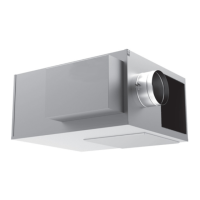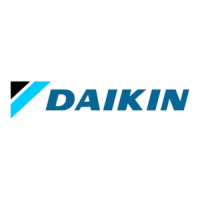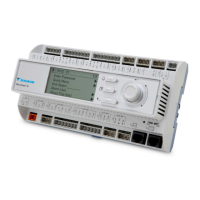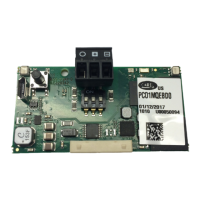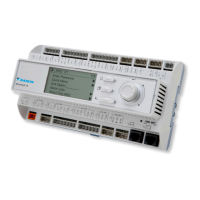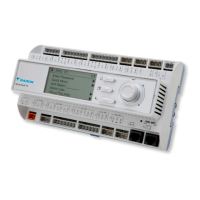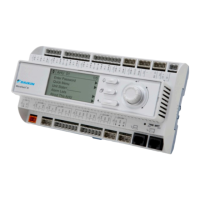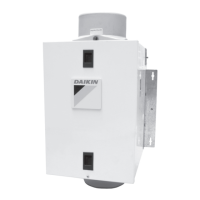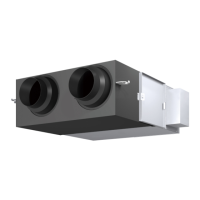www.DaikinApplied.com 23 OM 1280-2 • MICROTECH UNIT CONTROLLER
Reheat State
The Reheat state is a “normal” state during Cool mode. The
Reheat state typically is active when reheat is required to
maintain DATS during the Economizer mode, while maintaining
the required minimum OA damper position. The Reheat state
can also be made active if the optional CO
2
DCV feature is
provided and CO
2
levels are high, requiring the OA damper to
open beyond what is required for economizer cooling.
When Reheat state is active, the UVC uses the unit’s heating
capability as needed to maintain Reheat DATS. The CO
2
DCV
function (optional) is active and the OA damper is adjusted
as needed to maintain the CO
2
setpoint. See “CO2 Demand
Controlled Ventilation (optional)” on page 37).
Reheat/Low Limit State
The Reheat Low Limit state is a “non-normal” state during Cool
mode. The Reheat Low Limit state typically follows the Reheat
state when heat is unavailable or when the UVC reaches 100%
heat and still cannot maintain VCLL.
When the Low Limit state becomes active, the heating output
is set to 100% capacity and the Low Limit logic overrides the
OAD minimum position and adjusts the OAD toward closed
as necessary to maintain the DAT setpoint (see ”Outdoor Air
Damper Operation” on page 35) and “Night Purge State
Diagram” on page 11.
Can’t Cool State
The Can’t Cool state is a “non-normal” state during Cool mode.
The Can’t Cool state typically becomes active when primary
(economizer) and secondary (mechanical, hydronic) cooling is
not available (or disabled) or when an IAT, DAT or OAT sensor
failure occurs.
When the Can’t Cool state becomes active, no cooling is available.
Air Tempering Mode
The Air Tempering mode is a “normal” state that the UVC
can go into when the Fan Only mode is active (the control
temperature is between the heating and cooling setpoints and
and Air Tempering has been enabled using the LUI keypad or
ServiceTools software. The UVC will monitor the DAT during
5.0°F/2.78°C) the unit will use whatever heating is available to
1. Air Source Heat Pump with Electric Heat.
1
2. Water Source Heat Pump with Electric Heat.
1
3. Water Source Heat Pump without Electric Heat.
2
4. DX Cooling with Electric Heat.
1
5. DX Cooling with Hydronic Heat (Valve Control).
1
6. 2-Pipe Chilled Water Cooling and Hot Water Heating
(Face and Bypass).
2
7. 4-Pipe Chilled Water Cooling and Hot Water or Steam
Heating (Valve Control).
1
8. 4-Pipe Chilled Water Cooling and Hot Water or Steam
Heating (Face and Bypass).
2
9. 2-Pipe Chilled Water Cooling and Electric Heating
(Valve Control).
1
10. 2-Pipe Chilled Water Cooling and Electric Heating (Face
and Bypass).
1
11. 2-Pipe Chilled Water Cooling (Face and Bypass).
2
Note References:
1.
when the unit is in the Cooling super state, and the unit
binary input is closed.
2.
